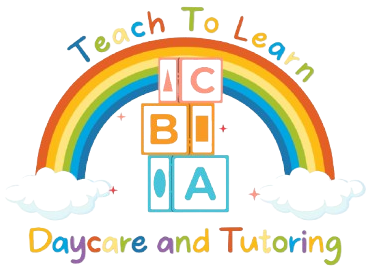Children usually love counting toys, clapping out rhythms, and spotting shapes in clouds. Yet, long before grades start slipping, small warning signs can show that a child is not building the math base they need. Missing these signals means later lessons pile up like bricks on unstable ground. The good news is that families and teachers can catch trouble early by watching for patterns in everyday play, homework, and talk. When we notice and act soon, we protect our confidence and keep learning on track. This article shows the clear signals of early math struggles and offers simple checks you can try at home or in class—no special tools required, just careful eyes and steady support.
Watch For Gaps In Early Number Sense
Number sense is the feel for quantity that lets kids know “three” is bigger than “one” even before counting.
When this sense is weak, children may:
- Mislabel small groups (“five” blocks when only three are present)
- Show no interest in estimating piles of items during play
- Struggle with subitizing, the quick recognition of 1–4 objects without counting
Research links poor number sense to later difficulties with fractions and algebra. A quick check is the “dot card” game: flash cards showing two to five dots for one second. A five-year-old should name the amount with little effort. If guessing remains random after practice, the base is shaky. Strengthen it with daily talks about “more,” “less,” and “how many altogether” during meals and chores. Repetition that feels like conversation, not drilling, rewires the brain’s quantity network.
Notice Trouble With Counting And Comparing Sets
Counting is more than saying numbers in order; it ties each word to a specific item. Watch for these missteps when children line up toys or snacks:
- Skipping numbers (“one, two, four”)
- Double-counting an object or missing the last one
- Ignoring order, counting the same row forward and backward, and giving different totals
A helpful technical term here is the cardinal principle—knowing the last number said gives the total quantity. Suppose that the idea is unclear by age six, and growth stalls. Try “one-to-one tagging” games: move each bead to a new bowl as you count it. Singing finger plays such as “Five Little Ducks” build stable order, while sorting buttons into “same” and “different” groups reinforces comparison skills.
Observe Memory Load During Simple Word Problems
Even first-grade word problems lean on working memory, the mental scratchpad that holds details while processing them.
Signs of overload include:
- Forgetting parts of the story midway through solving
- Repeatedly re-reading the question
- Solving the math correctly but answering with the wrong unit (“7 apples” instead of “7 baskets”)
You can measure this by reading a short problem aloud, hiding it, and asking your child to restate it before solving. If only fragments remain, memory, not logic, may be the bottleneck. Break problems into smaller bites, use pictures to anchor facts, and rehearse “say it back” routines. Memory grows like a muscle through small, frequent workouts.
Track Speed And Accuracy Of Math Facts
Fluency with facts frees mental space for new ideas. By the end of second grade, most children recall addition within 20 in three seconds or less.
Red flags are:
- Counting on fingers for 4 + 3 or 6 + 2
- Pausing longer than five seconds on single-digit subtraction
- Mixing up pairs that equal ten
Use a spaced retrieval chart—practice tricky facts for two days, pause for two more, then test again. Record both time and correctness. If progress is flat after two weeks, targeted interventions such as cover-copy-compare (write fact, hide it, rewrite, check) can help. Keep sessions short; five minutes twice daily beats one long drill.
Check Place Value Understanding With Visual Tools
Place value—the idea that “23” means two tens and three ones—is the spine of later math.
Warning signs appear when kids:
- Write numbers backward (“302” for “320”)
- Struggle to trade ten ones for a ten rod with base-ten blocks
- Read 405 as “forty-five”
A teaching tip is the expanded form exercise: 23 = 20 + 3. Ask children to build numbers using sticks and beans, then write what they made. Base-ten drawings link symbols to real quantities, and regrouping games with play money show why “ten dimes equal a dollar.”
Spot Avoidance Behavior During Math Activities
Sometimes the first clue is not a wrong answer but a pulled-back attitude. Watch for:
- Frequent bathroom breaks when math starts
- Complaints of stomachaches only during math homework
- Rushing through problems without reading them
Avoidance often hides anxiety, which research shows can reduce activity in the brain’s intraparietal sulcus, a region key for number processing. Build a low-stress routine: start with one “can-do” problem, praise effort, and gradually add challenge. Short, winsome math games (dice races, card matching) rebuild courage.
Use Screening Tools To Confirm Your Observations
While home checks help, formal tools give clear benchmarks. Common screeners include:
- Number Sense Screener (NSS): assesses quantity comparison and oral counting
- Early Numeracy Curriculum-Based Measurement: six one-minute tasks, such as missing number and quantity discrimination
- KeyMath-3 Early Numeracy: a detailed look at concepts from numerals to place value
Request these from your school or a learning center. They take 20–30 minutes and yield percentile ranks. Early identification opens doors to response-to-intervention (RTI) tiers, where targeted lessons close specific gaps before third grade, a point when intervention success drops sharply.
Partner With Teachers For Timely Math Support
Family-school teamwork multiplies progress. Steps to start:
- Share your checklist of observed struggles with the teacher.
- Ask for classroom data—scores on quick checks, notes on attention during math.
- Set joint goals, such as “answer nine of ten addition facts in two seconds.”
- Plan supports include manipulatives in class, short fact practice at home, and weekly updates.
When both sides see the same signals and track the same goals, effort stays consistent. If gaps persist, ask the teacher about small-group or one-to-one sessions, or seek an outside tutor who knows evidence-based protocols. Progress charts, reviewed every month, show whether the plan is working or needs tweaks.
Conclusion
Catching math trouble early is not guesswork; it is steady watching, simple tests, and open dialogue. By spotting shaky number sense, slow fact recall, or anxious avoidance, adults can step in before struggle turns into lasting dislike. With clear strategies, caring families, and responsive teachers, every child has a stronger start. Teach To Learn Daycare and Tutoring Service stands ready to back you with focused Reading and Math Services that reinforce these steps and keep young minds growing.





